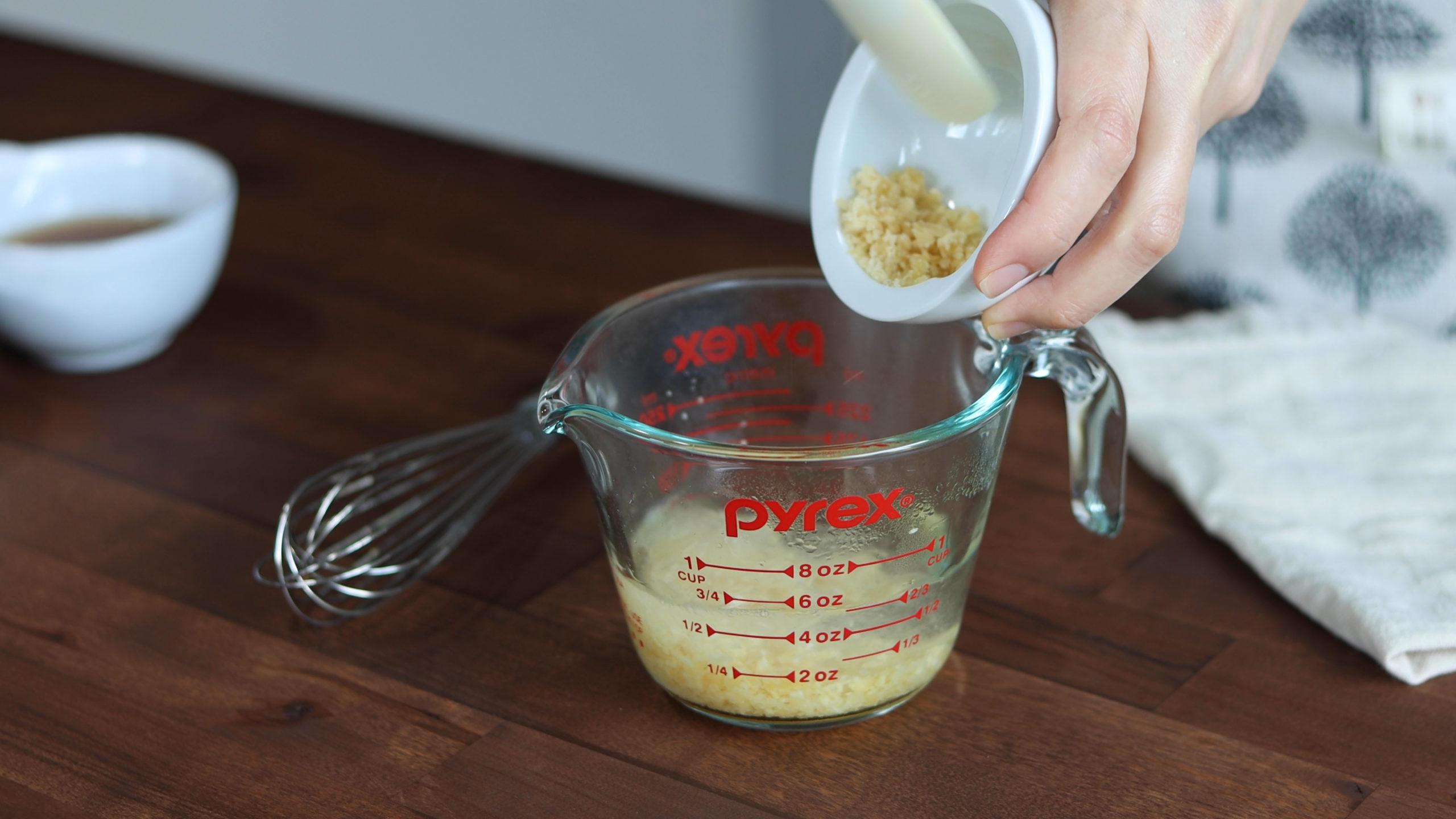This is my favorite go-to vegan Pad Thai recipe that I’ve made over and over again for my family. It is quick and simple with all the taste that I love: tangy, sweet, and salty with a perfect crunch from fresh mung bean sprouts and toasted peanuts – all in one dish! (Recipe and pictures updated on September 2, 2020)
Every Thai restaurant here in the U.S. has Pad Thai on the menu with their own twist and variation. Personally, I like my Pad Thai a bit less saucy but with lots of crunchy fresh mung bean sprouts. With multiple tries and mistakes, I finally made one that I am truly satisfied with that has the flavor that I am looking for. Be sure to check out my cooking tips below so you can make this delicious at home too.
Pad Thai Key ingredients
- Preserved radish, preferably sweet ones – gives this dish an amazing flavor and crunch that blends the sourness and saltiness to give this Pad Thai an amazing taste.
- Tamarind Juice – I used wet Tamarind pulp that comes in a dark brown block and simply dissolved a ping pong ball size into hot water. Then, massage and squeeze the tamarind to release the juice. You’ll get a brownish mixture and this is the tamarind that I grew up with. If you can’t find wet Tamarind pulp, try to substitute it with Tamarind paste or concentrate.
- Vegan ‘Fish’ sauce – is another key ingredient to my Pad Thai which gives the saltiness to the dish. Try my Vegan ‘Fish’ Sauce in this recipe made from simple pantry ingredients that lend a wonderful savoriness to this dish.
Vegan Pad Thai step-by-step
First, prepare the sauce. This step can be made ahead of time and refrigerate the sauce until ready to use. It’s good up to a week in the fridge or longer shelf life in the freezer.
Please see below on how the soaked rice noodles look like. I prefer to soak mine in cold water until pliable.
Heat a non-stick pan with oil and sauté shallots until they turn translucent, then add preserved radish. Since I used the salted preserved radish, there was no salt in my recipe. However, if you plan to use the sweet version, please adjust the saltiness accordingly.
Continue to sauté the garlic over medium heat until aromatic. Then, add in the Pad Thai rice sticks and give it a quick stir to spread out the noodles.
Add in the sauce and gently fold to combine the sauce together.
Finally, add the veggies, chili flakes, and crushed peanuts then toss to combine or until the bean sprout is fully cooked through. I prefer my bean sprouts with a crunch so I did the last step with heat off. Serve warm with more crushed peanuts, chili flakes, bean sprouts, and chives.
Cooking Tips
- Soak rice sticks in room temperature water instead of boiling water. Drain softened noodles, save it in a bag, and refrigerate. Noodles are good for up to 2 days. Let the noodles come to room temperature before using it.
- Use a large non-stick pan and have a pair of tongs or chopsticks ready when you are cooking the noodles. A large non-stick pan (12″) allows you to spread out the noodles while cooking without clumping them together.
- Cook in a smaller portion if this is your first time making this dish. I find that I have more control over the noodles if I split the portion in half.
- Make the Pad Thai sauce ahead of time and adjust the taste accordingly.
Vegan Pad Thai FAQ
Here are some of tips that I have learned over time making this dish.
- Pad Thai sauce is too sour – I used wet tamarind pulp and dissolved it in hot water. Please adjust the sourness accordingly if using store-bought tamarind concentrate. Look for brownish tamarind concentrate from Thailand or Malaysia.
- Can I use scallions/green onions? Sure! I do prefer to use Chinese chives as they are sweeter but green onions can be substituted if chives are not available.
- My noodles start to break while cooking – I soaked my noodles in cold water until they are pliable and then used a large size pan for this dish. With a large pan, you’ll have enough space to spread out the noodles while cooking. Also, a quick tip is to not add the sauce at once if this is your first time making Pad Thai. Gradually fold in the sauce and pull the noodles up while tossing. Use low heat if needed.
This Vegan Pad Thai recipe is
- Simple to make
- Delicious with crunchy fresh and cooked mung beans sprouts
- Savory with a little tangy from the tamarind juice (which I love)
- Customizable – for gluten-free, please use tamari or adjust the saltiness if using store-bought vegan fish sauce.
- Kids’ friendly
If you try this recipe, I would love to hear your feedback and see your beautiful re-creation. Leave me a comment, rate it, and tag @woon.heng and #woonheng to your photos on Instagram or Facebook. Happy cooking, friends!





